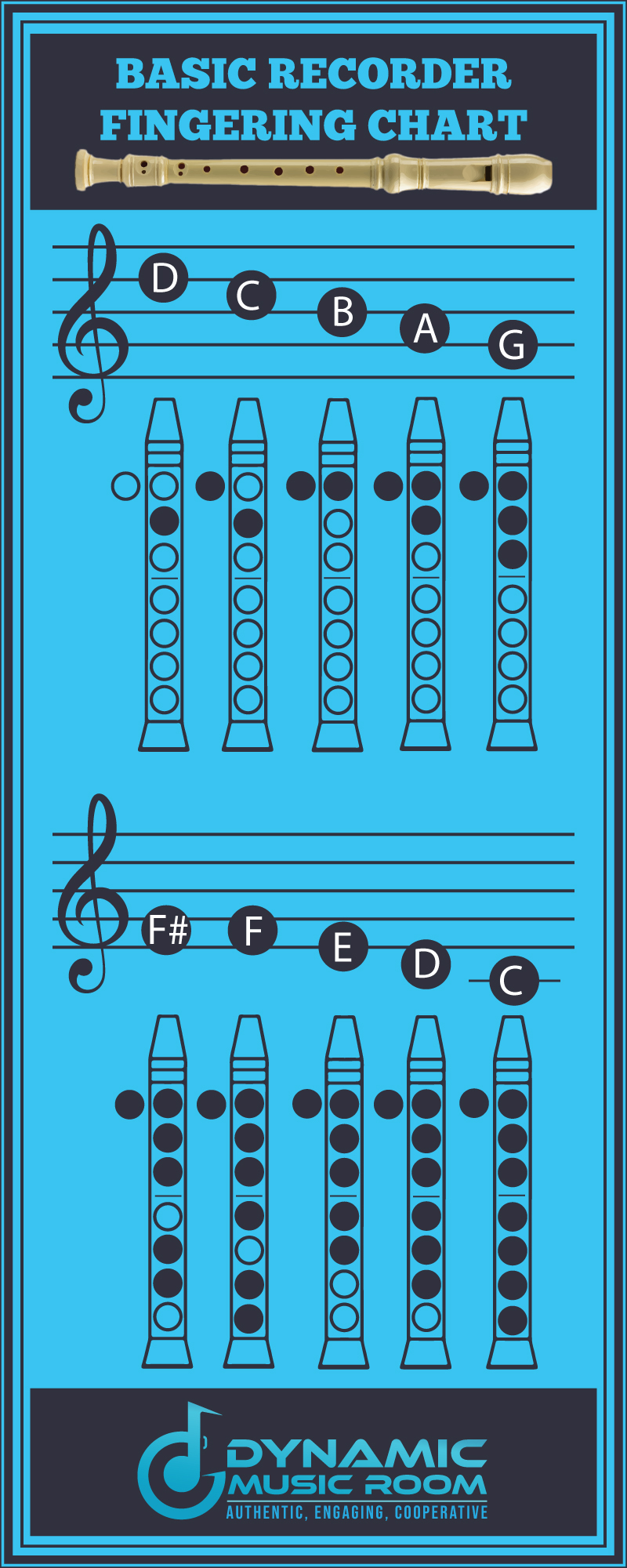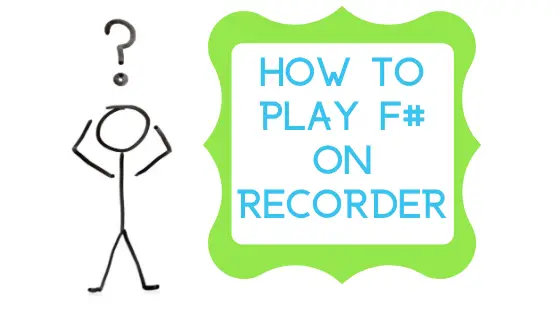Are you struggling with the tricky note F# for your soprano recorder?
Do you struggle to get your kids to learn this note?
You’re not alone. F# can be a tricky little note, but it’s not impossible to learn and is often one of the first ways music teachers introduce the idea of accidentals.
But even with helpful fingering charts, you may wonder:
How do you play F# on the recorder?
Playing F# on the standard baroque soprano recorder uses two hands with the left on top. Your left hand thumb covers the back thumbhole and the first three holes with the pointer, middle, and ring fingers. The right hand covers the fifth and sixth holes with its middle and ring fingers.
Look ahead for more details and a sample song!
Table of Contents
How To Play F# On Soprano Recorder
The fingering for F# may seem tricky because you have to skip a hole, but this is actually the easiest of all accidental notes to learn and play on the soprano recorder.
Let’s break down the fingering through words first.
- Take your left-hand thumb and cover up the thumbhole on the back, near the top of the recorder.
- Use your pointer finger (left hand) to cover up the first hole on the top (not the square hole or the one where you blow).
- The middle finger on your left hand covers the second hole.
- The ring finger (left hand) covers the third hole.
- Next comes your right hand, but you DON’T cover the fourth hole.
- Use your right-hand middle finger to cover the fifth hole.
- The ring finger of your right hand covers the sixth hole.
A quicker way to think of this may be through numbers. This is how I personally think of recorder fingerings.
For F#, I think: Thumb, 1, 2, 3, (other hand), 5, 6
You also find it helpful to check out this chart.

Check out the soprano recorder fingering chart guide for more details on all the basic recorder notes.
What’s an accidental?
I’ve mentioned accidentals before, but for those of you who don’t know what this is, this section is for you.
An accidental, for those of you who don’t know, is an altered pitch from the natural pitch.
Natural pitches are indicated by letters: A, B, C, D, E, F, and G.
In between these pitches except for E→F and B→C is another pitch.
These are altered pitches or accidentals.
If the in-between pitch is raised from the original, we give it a sharp, shown with a #.
If the in-between pitch is lowered from the original, we give it a flat, shown with a b.
For the note F#, knowing what we know now, we can see this note is a raised F.
Why can’t you put a note between B→C or E→F?
There are only 12 pitches in traditional Western music, and there is no note between these pitches.
Each of the 12 pitches is a half step apart. Between the notes in question, they are already at a half step.
How To Teach F# On Recorder: Procedure For Kids
As a teacher, I always struggled to get my students to learn new notes, especially trickier ones like F# on recorder.
Over the years, I’ve how to teach new notes better by moving through three phases:
- Learn the new note fingering.
- Develop skill in moving the note with common notes it travels to.
- Put the note in the context of a simple song.
We’ve already done step #1 in the previous section.
I introduce the note just like I describe above.
For step #3, I’ll share my favorite song for introducing F# in the next section.
This leaves step #2.
Here is my procedure (this is after you initially teach the fingering):
- Have students echo after you on F# 3-5 patterns.
- Echo patterns slowly going from F# to G and back. 3-5 times.
- Do the same patterns but with F# and E this time.
- Play up and down going from E→ F# → G → F# → E starting slow and going faster.
- On another day: Practice going back and forth from F# to A and F# to D.
- Slowly play up and down D → E → F# → G → A → G → F# → E → D.
- On another day: Practice the D-F#-A arpeggio by hopping up and down this triad.
Learn more teaching tips for recorders in our guide.
Sample Song For Learning F# On Recorder – Baby Shark
Yeah, it’s Baby Shark.
Kids love this song, and it’s perfect for learning F#!
One of the most important rules in teaching a new concept in any subject is to isolate the element without being distracted with the concepts surrounding it.
In other words, if your new concept is a new note, all the other elements of a song need to be simple and ones the student is already well familiar with.
If you look at Baby Shark, you’ll see this song fits the bill.
Rhythmically (which is a simplified version of the original), the song uses notation the students would be very familiar with by the time they reached the note, F#.
Pitch-wise, F# usually comes after B, A, G, high C, high D, E, low D, F natural, and C are learned.
The use of only 3 pitches outside the new one is a boon.
On top of all this, the song is one students probably already know, so they’ll know what the melody sort of sounds like.
Find Baby Shark in solfege to 7 popular songs as well.
Conclusion
It doesn’t have to be hard to learn how to play F# on the recorder.
Give it time, patience, and practice, and it’ll come to anyone in time.
Be sure to check out our recorder pages for more helpful information and song tutorials.


